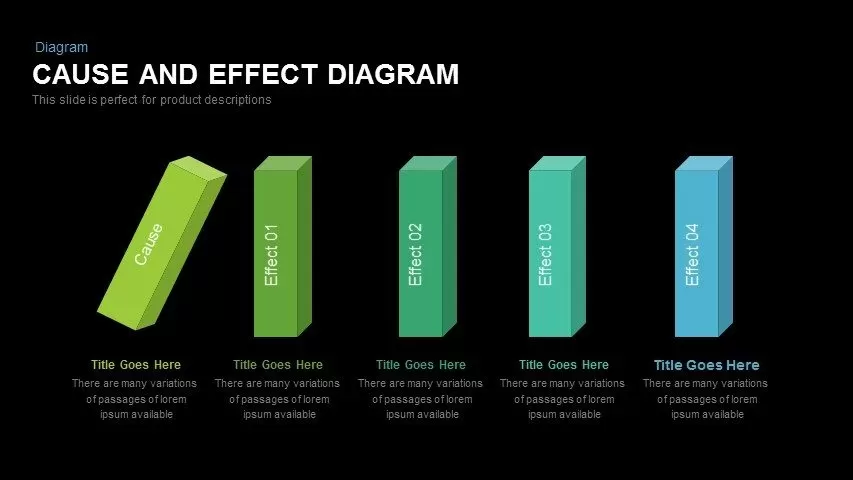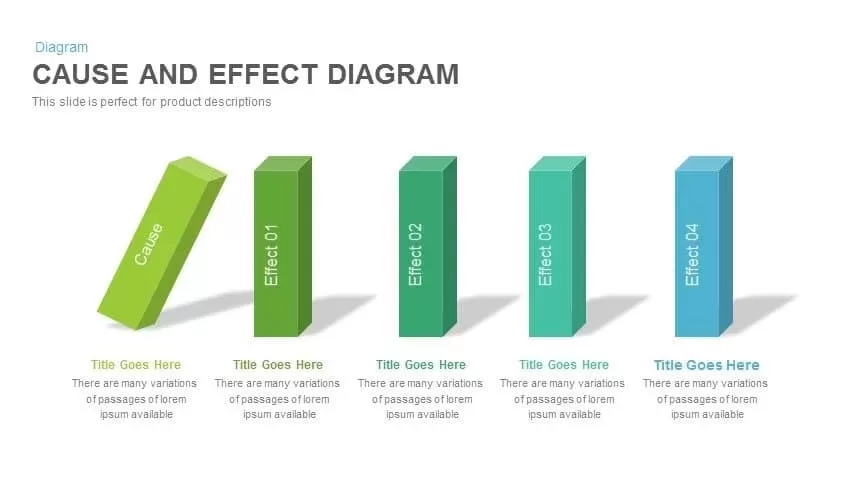Cause And Effect Diagram Powerpoint and Keynote template 1


Visualize causal relationships with this cause and effect diagram slide, featuring a 3D bar–inspired layout that maps one root cause to a series of cascading effects. The slide presents five vertical prism shapes—slanted lime green “Cause” bar leading into four upright bars in progressively different green and blue hues—each labeled for an effect and paired with a title and text placeholder. Subtle shadows and perspective angles lend depth while maintaining a clean aesthetic.
Designed for rapid customization in both PowerPoint and Google Slides, this infographic leverages editable vector graphics, master slide structures, and drag-and-drop elements to ensure consistent branding. Simply swap colors, adjust bar heights, replace labels, or insert icons to reflect your data and narrative requirements. Standardized fonts and flexible layouts guarantee high-resolution fidelity across conference screens, digital handouts, and printed materials without compromising legibility.
Ideal for illustrating how a single factor triggers multiple outcomes, this slide excels in quality management discussions, risk analysis sessions, and process improvement workshops. The clear visual metaphor of interconnected bars helps stakeholders trace the progression from root causes to subsequent impacts, enhancing decision-making and strategic planning. Use the placeholder sections beneath each bar to add detailed descriptions, metrics, or action items that contextualize each effect.
Who is it for
Quality engineers, risk managers, data analysts, project leads, and process improvement teams will find this diagram essential for mapping cause-and-effect relationships, driving root-cause analysis, and presenting complex dependency structures clearly.
Other Uses
Beyond standard cause and effect presentations, adapt this template for fault tree analysis, project retrospectives, system dependency mapping, or fault-impact assessments. Duplicate bars, reorder sequences, or modify bar widths to accommodate additional variables and evolving narrative needs.
Login to download this file

















































